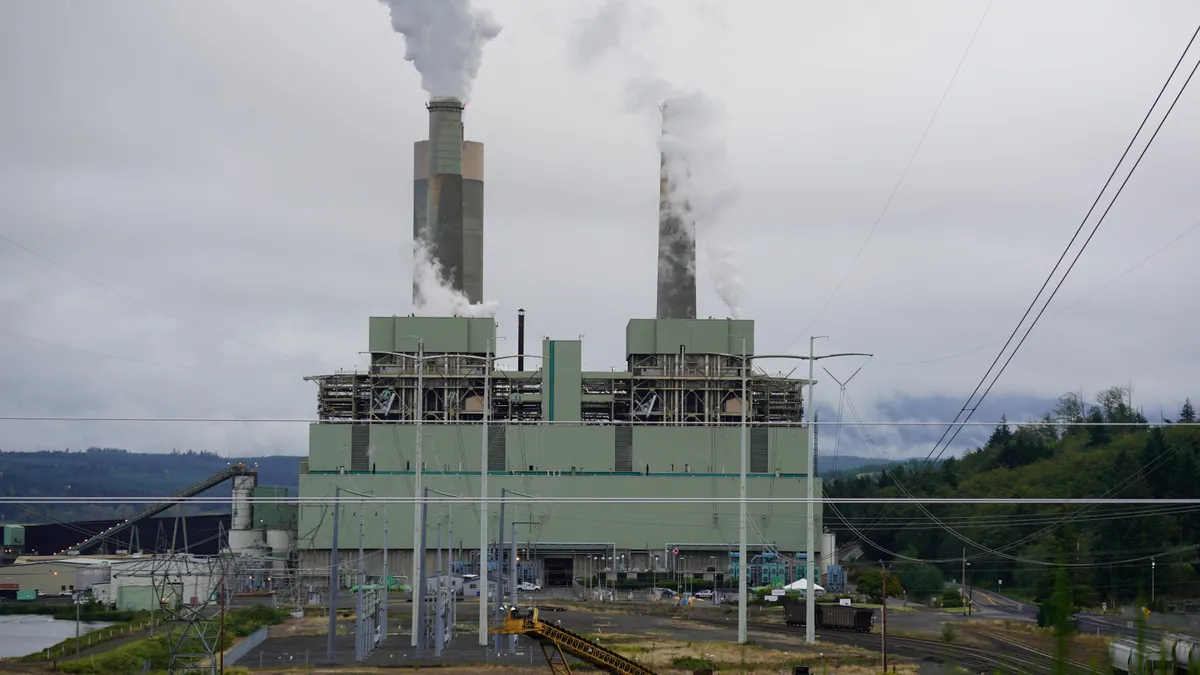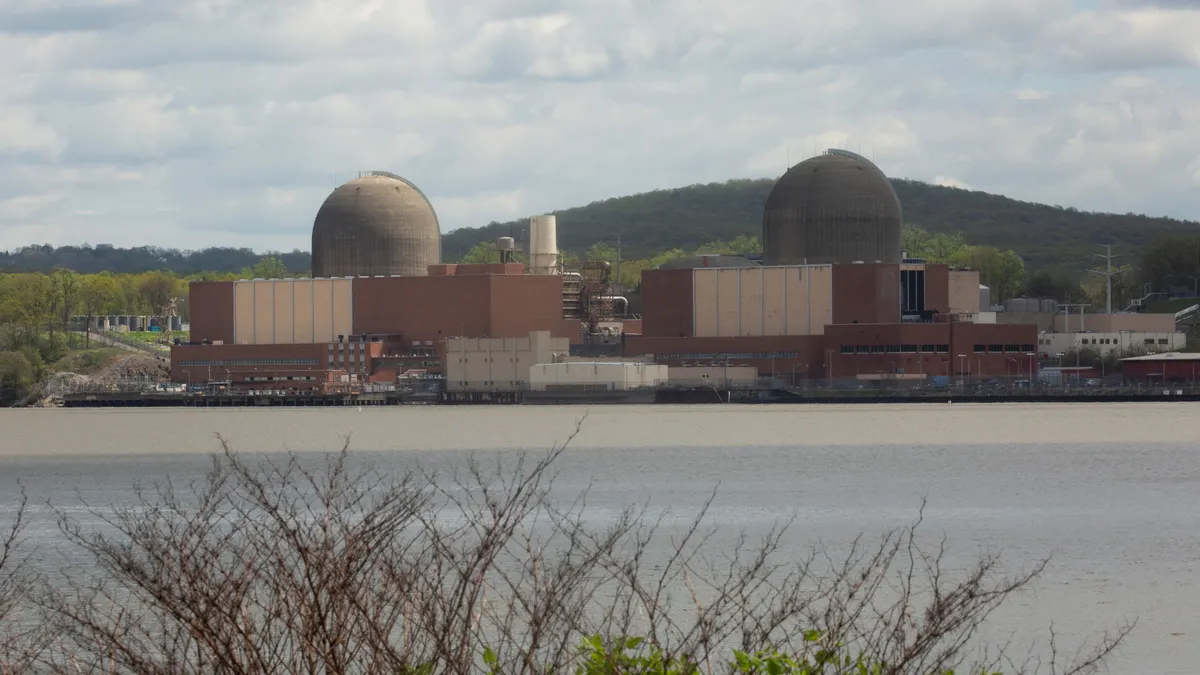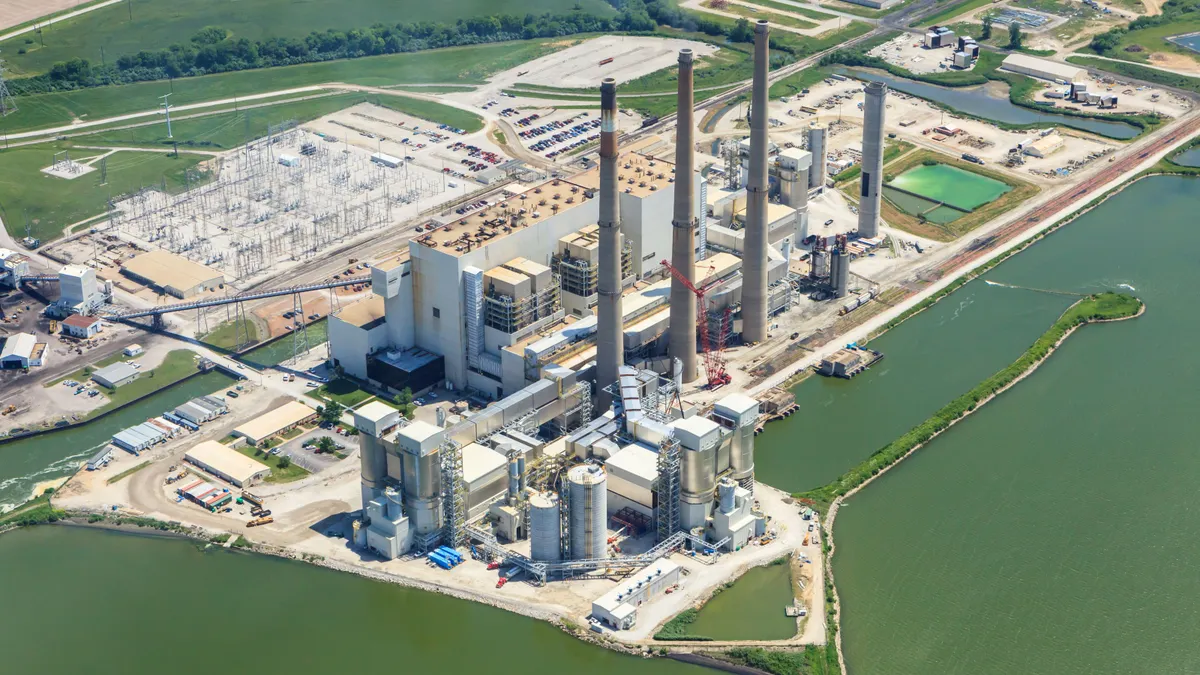The following is a Viewpoint by Chris Brown, President of Vestas Americas.
Markets love picking a winner. They also like to pick what works. In U.S. energy markets, more utilities and energy investors are doing the math and finding it adds up to more wind to power their generation fleets in the nation's "all-of-the-above energy" mix.
Across America's Heartland, wind and other clean energies have been winning as the new power sources of choice. It's not just because they're less polluting, but because of their low cost, record of grid reliability, and proven ability to generate U.S. jobs as well as predictable, homegrown power.
In the past few months, advocates of older energy and aging power plants did their best to turn back the clock to technologies of the past — attempting in the tax overhaul bill and regulatory rulemaking to take markets backwards and undo bipartisan commitments to market transitions for clean energy.
Thankfully, lawmakers and regulators listened to the markets and more than half a million Americans who work in wind, natural gas and solar power. No coincidence, these are also the preferred choices of U.S. energy customers for more than 90 percent of new U.S. power-generating capacity over the last two years. Ultimately, clean power emerged a winner on policy, again. The final tax bill stayed true to market reforms and enabled many utilities, in particular unregulated power purchasers, to invest in even more low-cost clean power generation.
Expanding U.S. wind belt in America's energy future
Today's marketplace and the business leaders managing it understand the realities driving America's energy future. They know what makes economic sense for U.S. energy customers. They are keenly aware of what it takes to ensure a resilient, market-driven grid that reliably delivers the most competitively priced electricity from a diverse energy mix.
Nowhere is this clearer than in the U.S. wind belt, where wind blows the strongest and wind power has grown the fastest. In 14 states stretching across the Great Plains and Rocky Mountains, also including California (dark blue on the map), wind generates 10 percent or more of power in 10 states, 20 percent or more in five states, and accounts for three quarters of all U.S. wind power capacity installed to date.
Wind is winning in these states because it's the lowest cost of all power sources – new or existing, clean or fossil fuel. That means smart utilities and other buyers can cut costs and save money whenever they add more wind, to supply new power or increase efficiency in their existing mix. This is strong marketplace math, and makes a compelling business case for wind.
Just ask the CEOs of utilities like Xcel Energy, MidAmerican Energy, AEP and DTE, who oversee the energy mix for a sizable share of the nation's grid. "The fuel of choice right now, certainly for us, is wind," said Xcel's Ben Fowke, who sees wind playing a major role in America's energy future. Xcel is adding another 3 gigawatts (GW) to reach 10 GW wind, or 35 percent of the generation mix in its 8-state region.
"Wind energy is saving our customers billions of dollars" and it also helps maintain grid reliability, said Fowke. "Most of our customers want a cleaner energy product," but "all of them want an affordable, reliable product." He says the case for wind is "economically compelling." Wind power is "the fuel of tomorrow, on sale today."
Market reforms: Generate jobs, energy security & cheap clean power
For today's energy business leaders, there is no question: Markets matter and markets are working. Most state and federal policy leaders understand this as well. In the decades since the 1973 oil crisis, U.S. policymakers have been working with the energy sector to empower well-functioning energy markets, to meet demand by U.S. consumers for affordable power and strengthen U.S. energy security with a diverse supply of electricity from domestic sources.
The shape of U.S. market reforms has evolved but its framework is the same: Support state and regional oversight, spur innovation and cost-efficiency, ensure a level playing field, reduce barriers and red tape, and boost investment. To encourage renewables, 37 states have adopted Renewable Portfolio Standards or voluntary targets. To drive competitive markets Congress passed the Public Utility Regulatory Policies Act in 1978, which has been revised over the decades and is due for another update to stay current with today's markets.
More recently, bipartisan majorities in Congress enacted tax credits to spur innovation and investment in wind and solar. Those industries agreed in 2015 to phase out the tax credits by 2020, with a predictable path for transition. The wind industry is committed to competing without incentives or handouts – ideally applied across the energy sector.
Much remains to be done, but results from these reforms are striking. Wholesale U.S. power prices are down 60 percent since 2008. America is well on its way to achieving full energy independence. And the U.S. power grid is more reliable than ever before.
Today, wind is one of the top three new U.S. power sources, with natural gas and solar. Homegrown clean power is now a mainstay and integrating well in America's new energy mix. It supplies cheaper, cleaner, more reliable power to U.S. consumers and supports a workforce of more than 500,000 U.S. jobs. Every year, the wind industry supports more than 30 U.S. jobs for every new wind turbine installed, many of them in rural communities.
Wind's resilience to policy challenges & polar vortexes
What doesn't make sense is rolling back this progress and risking U.S. jobs. That's what the House tax bill threatened in November, retroactively changing rules on investors that Congress enacted to phase out wind tax credits. Fortunately, the final tax bill kept Congress' word to wind workers and investors, preserving an environment for investment and jobs.
Nor did it make sense to risk undermining decades of reform in last fall's proposed rule change to the Federal Energy Regulatory Commission (FERC), which former Chair Jon Wellinghoff and others warned could blow up energy markets. On January 8, this plan to subsidize aging power plants in the name of grid resilience was unanimously rejected by FERC, which firmly backed competitive energy markets. The proposal "had little, if anything, to do with resilience, and was instead aimed at subsidizing certain uncompetitive electric generation technologies," said commissioner Richard Glick.
The weight of facts and business realities presented to FERC by industry groups, grid operators and other leaders was compelling. The reliability and resilience of America's power grid is stronger with the diversity of today's energy mix. It is better assured looking ahead, not back. Today's grid operators are doing that by utilizing improved market mechanisms and modern interconnection pools, and by integrating more flexible, low-cost fuels such as wind, natural gas and solar.
Wind's contribution to grid resilience is well-documented. In the 2014 polar vortex, wind helped keep the grid up and lights on from Texas to New England, while coal stockpiles froze and other energy tripped offline. In its report, PJM said: "All conventional forms of generation, including natural gas, coal and nuclear plants, were challenged by the extreme conditions." PJM singled out wind for beating expectations, saying it "contributed to PJM’s ability to maintain reliability."
When the 2018 polar vortex hit, grids were prepared — one of the few outages came when a New England nuclear plant went offline as a transmission line failed. Even when Hurricane Harvey hit Houston last fall, wind turbines kept turning, feathering their blades when the winds were fiercest — as they're designed to — and resuming when the storm passed.
Wind is winning because wind power works — even in extreme circumstances.
Wind is now America's #1 renewable energy and expanding as a utility-scale power source in more than 40 state markets. Wind's most compelling economic case is in the 14 wind-belt states, but in the next 1-2 years, new technology — more efficient turbines, bigger rotors, taller towers — will make wind power cheapest in 11 more states, including the Great Lakes region and Northeast U.S., for 25 states in total.
Advances in forecasting and smart data have helped demonstrate wind's ability to deliver predictable, reliable clean power to the grid. The biggest driver of wind power's growth continues to be price. Since 2009, wind's levelized cost of energy unsubsidized has dropped 67 percent, according to Lazard. In 2017, wind prices reached historic lows, dipping below $20/megawatt hour (MWh) for power purchase agreements in wind-belt states. They continue to trend down across the U.S., according to market reports. Interest rates for wind project financing have also hit record lows.
Business-case certainty for Xcel Energy, MidAmerican Energy, AEP & DTE
Moreover, wind is giving utilities and corporate buyers something they can't find in other energies, even cheap natural gas: Business-case certainty. Wind's fuel is free, so customers can lock in low prices with the long-term predictability of 20 or 30-year contracts, which conventional sources can't match with the potential volatility of future fuel prices.
This is the math that's driving Xcel Energy to make wind 35 percent of its generation mix. Others are aiming even higher. Regional power pools such as ERCOT in Texas and SPP in the Great Plains have topped 54 percent wind at times and continue to set new records. SPP is eyeing 75 percent or more wind on its grid to supply customers more low-cost, reliable power.
In Iowa, where wind supplies a nation's high of almost 40 percent of the state's electricity, MidAmerican Energy is investing $3.6 billion for 1,000 more wind turbines to raise its share of Iowa's renewable energy to 90 percent. Owned by Warren Buffet's Berkshire Hathaway, MidAmerican plans to ultimately supply 100 percent power from renewables.
In Oklahoma, AEP plans to buy a 2 GW wind farm to supply cheaper power in four states. It is "consistent with our strategy of investing in the energy resources of the future, and it will save our customers money,” said CEO Nick Akins. The utility plans to add more than 10 GW of wind and solar by 2030.
In the Midwest, DTE is adding 6 GW of wind and other renewables and modernizing its grid. The utility aims to supply 75 percent of its power from renewable energy and natural gas, said CEO Gerry Anderson. DTE is undertaking a "fundamental transformation in the way we produce power," he said, that will keep "power affordable and reliable."
For utilities large and small, the time has never been better to invest in wind.
The more wind the better, for utilities and energy investors looking to improve the bottom line and performance of their energy mix. Even more so if that mix includes natural gas, whose flexibility is a good complement to wind. More wind is also expanding clean power's U.S. footprint geographically, which regional power pools like SPP are leveraging to integrate ever higher wind levels across their service areas, using improved transmission to balance supply and demand.
This is important because the wind is always blowing somewhere across America's electric grid. As more wind power is installed and interconnected across larger grid operating areas, the impact of wind variability declines exponentially. Wind's share of time when it can supply significant power to the grid also increases to almost 100 percent. That's good news for grid planners and America's energy future.
Wind adds up as power of choice in wind belt and beyond
Technology improvements and integration will continue to drive down wind power costs and spur wind belt growth. This is a trend the industry is committed to push across its value chain, to offset the tax credit ramp-down and keep wind a clean power of choice, in 2020 and beyond. It will no doubt be a challenge that requires more innovation and hard work. But it's not as steep as the hill we've already climbed.
Demand in the marketplace certainly remains strong. Last September, when Xcel Energy announced its 300 MW Dakota Range wind project in South Dakota, it highlighted how “this project proves we can keep driving the clean energy transition of our supply mix while keeping customer bills low, even as incentives phase out.”
Xcel has good reason for its confidence in wind's future. Last August, the National Renewable Energy Laboratory (NREL) released a new study that reported smart technologies and other progress can cut wind costs another 50 percent and "drop the unsubsidized cost of wind energy below the projected cost of fuel for existing natural gas plants by 2030." The study calculated this can boost wind's market share to 20 percent of U.S. power by 2030 and 47 percent by 2050. It will also save utilities and U.S. energy customers as much as $150 billion in cumulative power sector costs.
Among the key cost drivers, NREL pointed to projected progress in smart technologies as well as advances in siting that will further reduce prices and improve performance to sustain wind's edge as a preferred customer choice.
Siting can be a challenge for all energy technologies, but it's also an opportunity and ultimately about making a choice. Most communities want a secure affordable power source; not as many want it in their backyard. As a customer choice, however, wind compares favorably with fossil fuel and nuclear power plants.
Wind is a cleaner, less intrusive neighbor, doesn't consume local water resources and can be located as close or far as transmission lines allow. Most importantly, wind supplies cheaper electricity than traditional power plants. It also brings in $245 million annually from wind farm leases to family farms and others in rural America, which makes siting decisions easier in many states and communities.
Looking ahead, opportunities from advances in wind farm siting are breathtaking. According to NREL, next-generation technologies will enable "SMART wind power plants of the future" where turbines are interconnected and interact in concert to "actively engage with the flow" of wind and "optimize wind power plant operations" and performance.
NREL's report says that by 2030, wind power innovations "will yield total reductions in [levelized cost of energy] of 50 percent from current costs and enable large-scale deployments of unsubsidized wind energy nationwide." At Vestas, we're already using advanced mathematics, smart data and supercomputers to optimize wind turbine efficiency and site selection, and to improve performance and lower costs across the business of wind power production.
Today, we can help utilities and other energy customers predict not just how fast and which way the wind will blow at a given wind farm site, but also forecast profitability and return on investment from generating wind power at any 10-meter square patch on Earth, over the full 20 to 30-year life of a wind turbine. That's powerful math, and a very useful tool for building business-case certainty. For most customers, the math adds up to more wind.
Chris Brown is President, Vestas Americas and Board Member and Past Chair, American Wind Energy Association (AWEA)





















